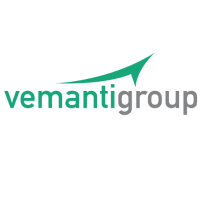NEW YORK, AITB, (GLOBE NEWSWIRE) — AIT Therapeutics Inc. (OTC:AITB), a clinical-stage biopharmaceutical company focused on developing inhaled Nitric Oxide (NO) for the treatment of patients with serious lung infections and pulmonary hypertension, today announced publication of its Phase 2, double-blind, randomized controlled trial for treatment of infants with moderately severe bronchiolitis. The article, entitled Nitric Oxide Inhalations in Bronchiolitis: A Pilot, Randomized, Double-Blinded, Controlled Trial was published in the December 2017 issue of the peer-reviewed Pediatric Pulmonology journal.
“We are pleased to see our trial highlighted and recognized by this prestigious journal,” said Steve Lisi, Chairman and Chief Executive Officer of AIT Therapeutics. “Bronchiolitis can be a very serious condition in infants, potentially leading to long hospital stays and increased incidence of asthma or COPD later in life. There is no approved treatment for bronchiolitis and we hope to bring our nitric oxide therapy to market to help treat these patients.”
The trial enrolled 43 patients who received intermittent inhalations of nitric oxide 160 ppm for 30 min in addition to standard supportive treatment (oxygen and hydration) or standard supportive treatment. Treatment was given 5 times/day to hospitalized infants (2-11 months) for up to 5 days. Results from the study showed no difference in side effects in the treatment arm vs the control arm. Additionally, outcomes on secondary efficacy measures, such as hospital length of stay, were encouraging.
Based on this published Phase 2 data, AIT has initiated the first of 2 planned phase 3 trials. This trial, called the NO-BRO trial (nitric oxide in bronchiolitis), is a prospective, randomized, double-blind, controlled trial that is expected to enroll 94 patients, aged 0-12 months, who are hospitalized due to bronchiolitis. Patients receive either standard-of-care (typically oxygen and hydration) or standard-of-care plus inhaled NO at a concentration of 160 ppm for 30 minutes 5 times per day for up to 5 days. The primary endpoint is hospital length-of-stay. Secondary endpoints are time required to achieve a clinical score of 5 or less on the modified Tal score and time required to achieve oxygen saturation (SaO2) of 92% or greater. Data are expected to be announced in the second quarter of 2018. Please refer to our website for more information on the modified Tal score.
About Bronchiolitis
The majority of hospital admissions of infants with bronchiolitis are caused by respiratory syncytial virus (RSV). RSV is a common and highly transmissible virus that infects the respiratory tract of most children before their second birthday. While most infants with RSV present with minor respiratory symptoms, a small percentage develop serious lower airway infections, termed bronchiolitis, which can become life-threatening. The absence of treatment options for bronchiolitis limits the care of these sick infants to largely supportive measures. AIT’s system is designed to effectively deliver 160 ppm NO, which has been proven to eliminate bacteria, viruses, fungi and other microbes from the lungs.
About AIT Therapeutics Inc.
AIT Therapeutics Inc. is a clinical-stage biopharmaceutical company using nitric oxide (NO) to treat serious lung infections and pulmonary hypertension. The Company is currently applying its therapeutic expertise to treat lower respiratory tract infections that are not effectively addressed with current standards of care. AIT Therapeutics is advancing its revolutionary NO respiratory targeted system in clinical trials for the treatment of bronchiolitis and for nontuberculous mycobacteria (NTM). For more information, visit www.AIT-Pharm.com.
Forward-Looking Statement
This press release contains “forward-looking statements.” Forward-looking statements include statements about our expectations, beliefs, or intentions regarding our product offerings, business, financial condition, results of operations, strategies or prospects. You can identify such forward-looking statements by the words “expects,” “intends,” “plans,” “projects,” “believes,” “estimates,” “likely,” “goal,” “assumes,” “targets,” “potential,” and similar expressions and/or the use of future tense or conditional constructions (such as “will,” “may,” “could,” “should” and the like) and by the fact that these statements do not relate strictly to historical or current matters. Rather, forward-looking statements relate to anticipated or expected events, activities, trends or results as of the date they are made. Because forward-looking statements relate to matters that have not yet occurred, these statements are inherently subject to risks and uncertainties that could cause our actual results to differ materially from any future results expressed or implied by the forward-looking statements. These forward-looking statements are only predictions and reflect our views as of the date they are made with respect to future events and financial performance. Many factors could cause our actual activities or results to differ materially from the activities and results anticipated in forward-looking statements, including risks related to: our approach to discover and develop novel drugs, which is unproven and may never lead to marketable products; our ability to fund and the results of further pre-clinical and clinical trials; obtaining, maintaining and protecting intellectual property utilized by our products; our ability to enforce our patents against infringers and to defend our patent portfolio against challenges from third parties; our ability to obtain additional funding to support our business activities; our dependence on third parties for development, manufacture, marketing, sales, and distribution of products; the successful development of our product candidates, all of which are in early stages of development; obtaining regulatory approval for products; competition from others using technology similar to ours and others developing products for similar uses; our dependence on collaborators; and our short operating history. We undertake no obligation to update, and we do not have a policy of updating or revising, these forward-looking statements, except as required by applicable law.











